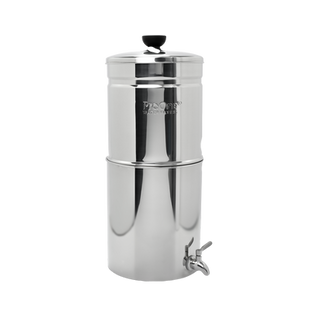Australian PFAS contaminations concerns realised. The Slow Progress in Regulating PFAS: A Looming Health Threat in Australia?
Reciently the presence of PFAS (Per- and Polyfluoroalkyl Substances) has emerged as a significant issue, especially regarding water sources. These "forever chemicals" are pervasive, persistent, and pose grave health risks to individuals, yet Australia appears to be lagging in taking decisive action to regulate or ban these harmful substances. Here we take a quick look at the concerning realities of PFAS contamination, the associated health concerns, and the urgent need for Australia to address this pressing issue.
Understanding the PFAS Predicament
PFAS are a group of human-made chemicals used in various industrial processes and consumer products. Due to their persistent nature, PFAS do not break down easily in the environment. This has led to widespread contamination of water sources. From firefighting foams to non-stick cookware, these chemicals have seeped into the groundwater, endangering public health.
Australia's water bodies, essential sources of drinking water and ecosystem stability, are increasingly at risk due to PFAS contamination. While many sites have been flagged since way back in the early 2000's in is not until reciently that the voulme of the contaminations have become more know,
Across the country, communities are facing the consequences of prolonged exposure to these harmful substances, raising profound concerns about the long-term impact on health and the environment.
Health Concerns: Unveiling the Risks
The health implications of PFAS exposure are deeply troubling. Studies have linked PFAS to various adverse health effects, including increased cholesterol levels, immune system suppression, and a higher risk of certain cancers. Pregnant women, infants, and young children are particularly vulnerable to the detrimental effects of PFAS, highlighting the urgency of addressing this issue promptly.
Global Context?
On April 10, 2024, EPA in the USA announced the final National Primary Drinking Water Regulation (NPDWR) for six PFAS.
The EPA expects that over many years the final rule will prevent PFAS exposure in drinking water for approximately 100 million people in the USA, prevent thousands of deaths, and reduce tens of thousands of serious PFAS-attributable illnesses.
The EPA has been talking with companies in Australia and New Zealand about different ways to clean PFAS from water.We are eager to observe the impact of these changes globally.
A Case For Water Filters
Given the pervasive nature of PFAS contamination in water sources, individuals and communities must take proactive steps to protect themselves from exposure. Investing in a reliable water filtration system equipped to remove PFAS compounds is crucial in ensuring access to clean and safe drinking water.
In Australia, the demand for water filters capable of effectively removing PFAS is on the rise, as people become increasingly aware of the risks associated with consuming contaminated water. By choosing a quality water filter designed to target PFAS, individuals can take control of their health and reduce their exposure to these hazardous chemicals.
Luckily there are a few height quality water filter options on the market that will not only remove PFAS but many other chemicals as well
Pure Water 4 Life Filters Systems Remove PFAS
We have a range of systems that filter PFAS to suit everyones budget as well as kitchen set up. Click Below to explore the range.


































